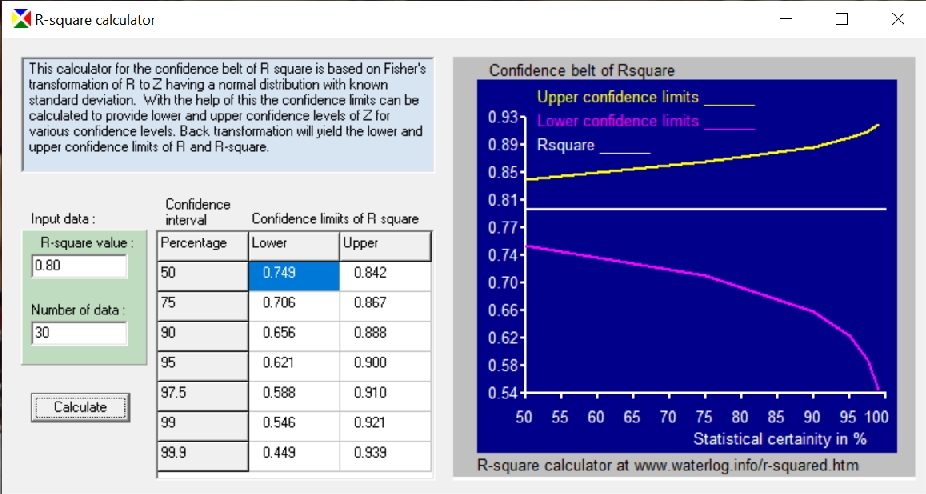|
The correlation coefficient (R) is often represented by R squared, the coefficient of determination or explantion. This coefficient (between 0 and 1) is a measure for the goodness of fit of a regression line or curve. R=1 means a perfect fit while R=0 means zero fit. The calculator program gives the range over which the calculated R or R squared value may deviate from the true value. The range is determined by the assumed probability (confidence) interval. Screenprint of the R-squared calculator: 
|
Download:
R-squared
calculator.
Go to:
software
& models
articles
& manuals
reports
case studies
FAQ's
& papers
home
page


